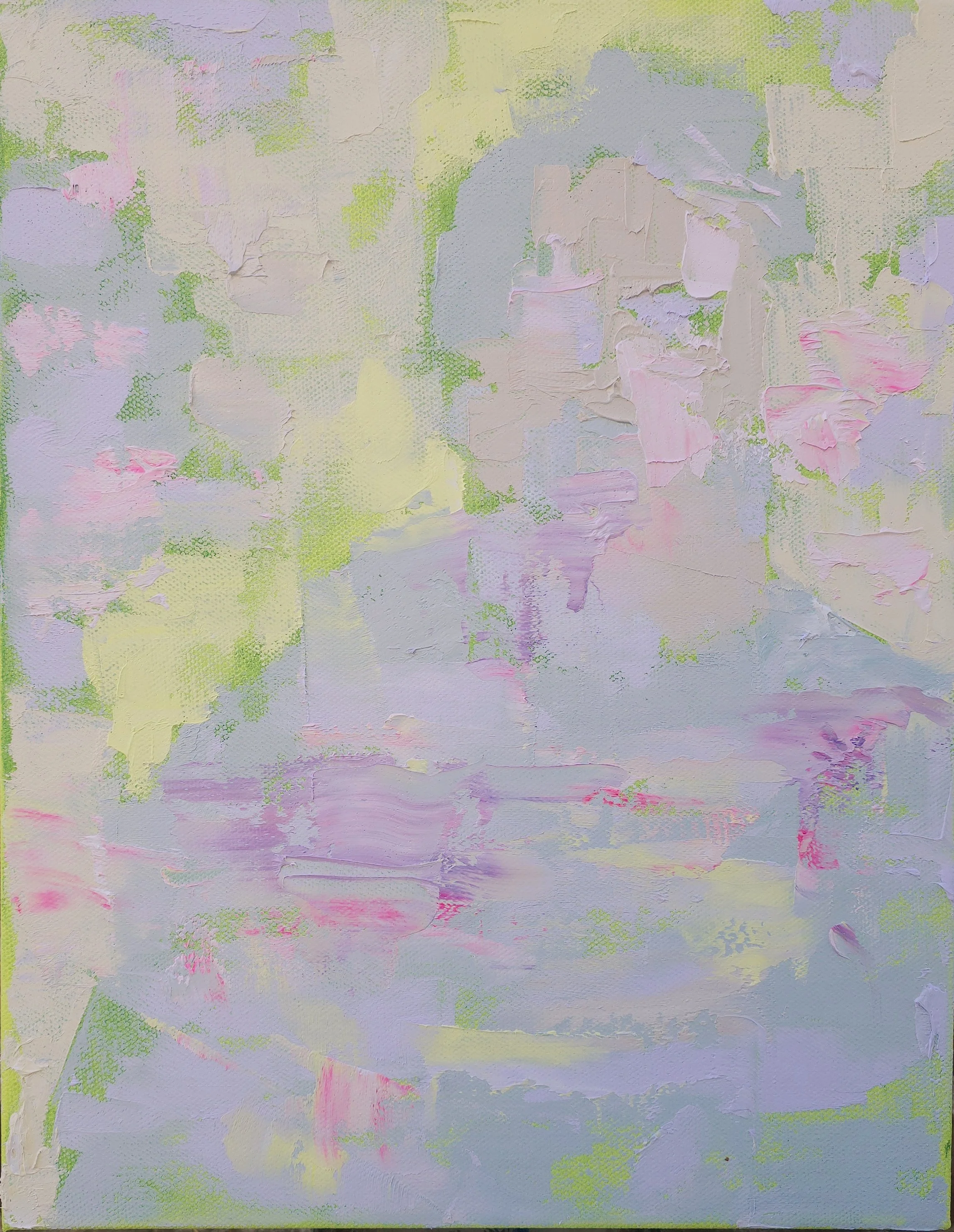The term axiom refers to a presumed truth. It's used in mathematics and philosophy to describe an idea that’s generally accepted as true—something self-evident that doesn’t require proof. I wonder what an axiom would look like in the world of visuals and images. It seems to me that this might be impossible in a realm so inherently subjective. I’m using the term as a descriptor in my work to tease out the nature of optics—how we see, how we digest information, how we search for truth through the various images we consume on a daily basis. I like to ponder this question: by calling my painting Axiom, does it necessarily make it one?
Over the years, my works have interpreted images I find in the news cycle. But I’ve begun to expand my practice to look at historical images, film, and movies—how these sources also shape cultural identity and collective consciousness. I’ve also been looking at stock images, which I find speak to these ideas— I think of them as artifacts that will be left behind and discovered years into the future. There’s something intriguing to me about the fact that all of these image sources—though quite different—are able to function similarly. Some are designated as truth and documentation, while others are designated as fiction and storytelling. Yet they are, in many ways, interchangeable. They substitute for one another in how we use them to form our worldview and our cultural identity—how we perceive the world.
My hope is that my work creates a dialogue around this concept and the dilemma we face in a time where we are inundated by images, and where we’re constantly on the cusp of questioning what is real and what is fake. New technologies seem only to heighten our uncertainty and further disrupt our grasp on reality. And then we adjust again. Our threshold for understanding truth is more flexible than we know. I paint about this experience. To me, oil paint is the perfect medium for this—it can hover between reality and abstraction. Throughout the history of painting, the medium has spanned the functions of documentation, idealism, storytelling, and the complete obliteration of representation. I’m interested in the gymnastics, the vocabulary, and the range that paint application can bring to these questions.
I find it fascinating to think about how painting can be transformative in the same way that photography can be. I’m drawn to the idea that an image can be both invented and revealed, while also being completely obliterated within a painting. I’m always thinking about how my work can hover on the edge of legibility—how something can seem to appear clearly in one moment and then dissolve or disappear in another. I’m using the materiality of paint, along with its wide vocabulary—color, tonality, texture—to reflect on how we see, and to spark dialogue about perception in the 21st century.
All of the images I’m using come from different time periods and different contexts within India. I find it fascinating that when I remove the original context, certain residues remain. There’s something that lingers, and I’m interested in those lingering residues—those signifiers and markers that can both appear and disappear. Choosing images from India is also a personal way for me to understand something that feels both familiar and unfamiliar at the same time. I think this also speaks to a larger condition: images can feel simultaneously known and unknown. They can resemble something we’ve seen or believe to be true, while also being completely new or alien to us. I draw a thread between that experience of being a 21st-century being and my own relationship to this place on the other side of the world, where my family comes from.
Axiom, 2025, oil on canvas, 60 x 48 inches


